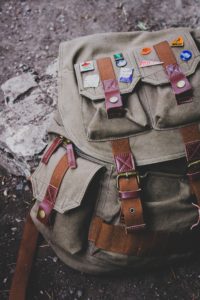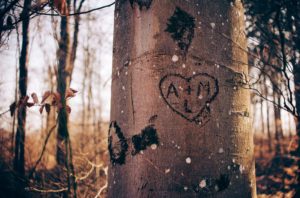Whether by leading a hike, hosting a campout, teaching climbing skills, or coordinating an environmental education class, outdoor educators, and program leaders are responsible for helping others form lifelong connections to the natural world. However, it’s also important to remember our responsibility to help preserve and protect the places where we teach and play by weaving the concept of stewardship into programming whenever possible.
All humans leave a mark when spending time outdoors, whether that’s by disturbing vegetation, impacting water resources, or interrupting wildlife habits; as the number of recreationalists increases, these impacts threaten to rise, as well. While it’s good for all people to internalize the concept of stewardship, it’s especially important to help make it feel intuitive to young people. As we work to nurture their connections to the outdoors, we can also help them develop empathy for the natural world, critical to ensuring we leave our planet in good hands for generations to come.
One of the best tools in this regard is Leave No Trace, a movement that offers guidelines for lessening the impacts of outdoor recreation while providing a roadmap for sustainable practices via its Seven Principles: Plan Ahead and Prepare, Travel and Camp on Durable Surfaces, Dispose of Waste Properly, Leave What You Find, Minimize Campfire Impacts, Respect Wildlife, and Be Considerate of Other Visitors. While it’s possible to teach these principles on their own, it’s also important to consider how they can be incorporated into programming in an organic way, while also considering the unique needs of young people of all ages and abilities. Here are a few ideas to help you get started; you can find full descriptions of these activities and others in our Leave No Trace Seven Principles Activities document:
Are You Ready? (Principle: Plan Ahead and Prepare)
This activity offers a fun, hands-on way to explore the importance of planning and packing correctly for any number of outdoor activities. Participants bring a fully loaded daypack and are then tasked (in small groups) with figuring out whether they have the appropriate supplies for a specific activity (day hike in the desert, fishing in an alpine environment, etc.).
Surface Hopscotch (Principle: Travel and Camp on Durable Surfaces)
This game illustrates the concept of “durable surfaces” by using index cards with the names of both durable (sand, concrete, etc.) and non-durable (cryptobiotic soil, grass, etc.) surfaces printed on one side. These cards are laid on the ground blank side up and participants take turns moving through this hopscotch-esque human-sized game board, their forward motion dictated by whether or not they’re on a durable surface at that time (and their memory of where these cards are located on the “board”).
Close Encounters of the Unkind (Principle: Be Considerate of Other Visitors)
This activity serves as a lesson in empathy by exploring how your actions in the outdoors can affect other people’s experiences. During a hike, several participants (or adults) are tasked with displaying inconsiderate behavior on the trail (listening to a radio, taking a break with gear spread across the path, etc.), unbeknownst to the larger group. Along the way, the leader can take the opportunity to explore how participants felt when they encountered the disruptive hiker, what that person could have done to be more considerate to others, and so forth.
Of course, the best way to incorporate Leave No Trace guidelines into your programming is to internalize them yourself! You’ll find plenty of resources throughout The Leave No Trace Center for Outdoor Ethics website, but you might want to go a step further and take a training course online or in person. You can also register for our free Leave No Trace Youth Program Accreditation Webinar with Andrew Leary, National Youth Programs Manager for The Leave No Trace Center for Outdoor Ethics, on November 14th to learn how their new accreditation process can add value to your programming.



